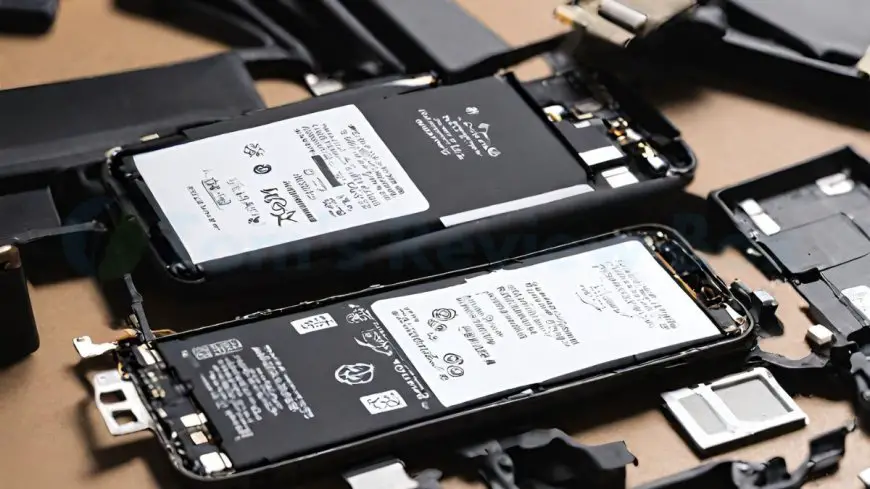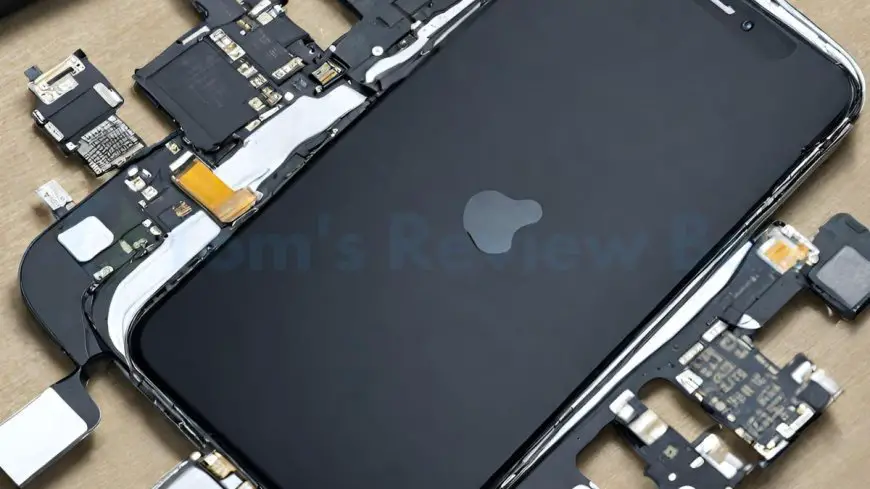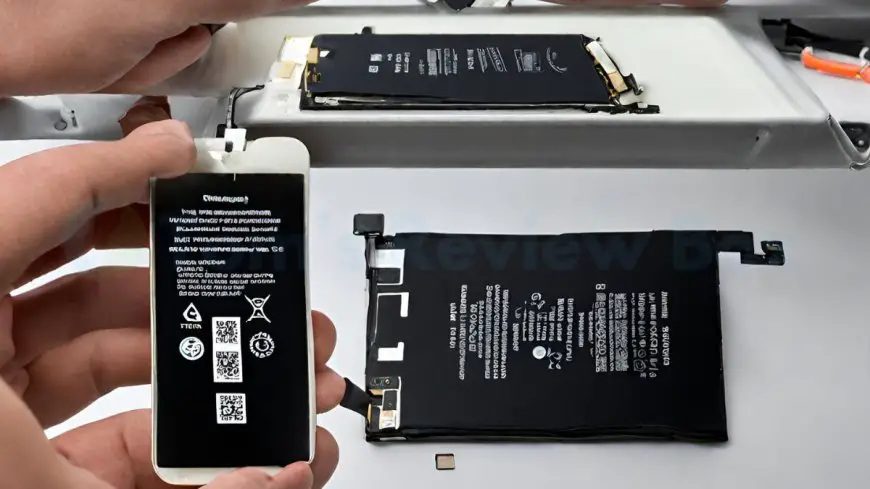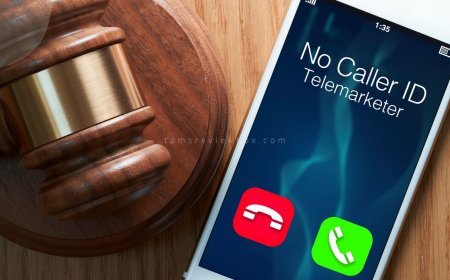iPhone Battery Replacement Time: Understanding, Process, and Care
Quick and affordable iPhone battery replacement. Find an Apple Store or Authorized Service Provider near you for fast service.

When it comes to iPhone battery replacement time, understanding the process and timeline is essential. Knowing how long it takes for a battery replacement can help you plan ahead and minimize downtime. Whether you're getting your battery replaced at an authorized service provider or attempting a DIY replacement, knowing the typical timeframe involved can make the experience smoother.
Key Takeaways
-
Understand your iPhone battery to recognize signs of degradation early on.
-
Look out for indicators like rapid battery drain or unexpected shutdowns as signs of battery issues.
-
Prepare for a battery replacement by backing up your data and disabling Find My iPhone.
-
Familiarize yourself with the replacement process and seek professional assistance if needed.
-
The timeframe for an iPhone battery replacement typically ranges from 30 minutes to a few hours.
-
After replacing the battery, ensure proper care by avoiding extreme temperatures and using certified chargers.
Understanding iPhone Batteries
Composition
iPhone batteries typically consist of lithium-ion technology, known for its high energy density and long life cycle. These batteries are integrated into the device, located towards the bottom to allow for efficient space utilization. The materials used in iPhone batteries include lithium cobalt oxide, graphite, and a separator to prevent short circuits.
Lifespan
The average lifespan of iPhone batteries is around 500 charge cycles, equivalent to approximately two years of regular use. Factors influencing battery longevity include temperature exposure, charging habits, and overall usage patterns. To extend your iPhone battery's lifespan, avoid extreme temperatures, charge it between 20% and 80%, and reduce background app activities.
Performance Indicators
Recognizing signs of battery performance issues is crucial for maintaining optimal device functionality. Common indicators include rapid battery drain, unexpected shutdowns, and prolonged charging times. Interpreting performance indicators related to battery health involves checking the maximum capacity percentage through settings and utilizing third-party apps for detailed diagnostics. Regularly monitoring these indicators can help prevent sudden battery failures.
Signs of Battery Degradation

Slow performance
If your iPhone is experiencing slow performance, it could be due to battery degradation. This issue can cause apps to load slowly and the device to lag during use. To address this, consider replacing the battery.
-
Check battery health percentage in settings.
-
Visit an Apple Store or authorized service provider for a battery replacement.
-
A degraded battery can lead to reduced processing power and overall sluggishness.
Unexpected shutdowns
Unexpected shutdowns on your iPhone may indicate battery problems, especially if they occur when the battery is not low. To prevent this, ensure your device's battery health is optimal and consider replacing it if needed.
-
Avoid exposing your iPhone to extreme temperatures.
-
Regularly monitor your battery health to prevent sudden shutdowns.
-
Sudden shut downs disrupt user experience and can lead to data loss.
Battery health percentage
The battery health percentage reflects the current condition of your iPhone's battery. It indicates how much capacity the battery has retained compared to its original state. Understanding this metric helps you gauge when it's time for a replacement.
-
Higher battery health percentage means better performance and longevity.
-
A lower percentage signifies decreased capacity and potential issues.
-
To maintain a high battery health percentage, avoid frequent full discharges and extreme temperatures.
Preparing for Replacement
Backup Data
Backing up data before replacement is crucial to avoid losing important information during the process. Ensuring data safety is essential to prevent any potential data loss or corruption.
To securely backup iPhone data, utilize iTunes or iCloud services. Connect your device to a computer and initiate a backup through iTunes. Alternatively, enable iCloud Backup in your iPhone settings to automatically save your data online.
During the battery replacement process, ensure that your backups are recent and complete. Store important information on external drives or cloud services for extra security.
Power off iPhone
Powering off your iPhone correctly before replacement is vital to prevent damage to the device. Turning off the device ensures that no electrical currents are running through it during the replacement process.
To safely shut down your iPhone, press and hold the power button until the "Slide to power off" option appears on the screen. Slide it to turn off your device completely.
It's crucial to follow this step as leaving the phone powered on can pose risks of electric shock or damage while handling internal components during replacement.
Gather Tools
Having the right tools is essential for a successful DIY battery replacement. Essential tools include a pentalobe screwdriver, suction cup, spudger tool, and tweezers for delicate operations.
Gather these necessary tools from reputable sources like electronic repair shops or online retailers specializing in phone repair kits. Ensure that you have all required tools before starting the replacement process.
The importance of having proper tools cannot be overstated as using incorrect tools can lead to damaging your device or causing difficulties during the replacement procedure.
Replacement Process Overview

Authorized service
Choosing authorized service centers for iPhone battery replacement offers various benefits. These centers use genuine parts, ensuring quality and compatibility. Opting for authorized service guarantees authenticity and reliable warranties.
Authorized service providers differ from unauthorized ones in terms of reliability and expertise. Authorized centers employ certified technicians with proper training, while unauthorized providers may lack the necessary skills. The use of genuine parts by authorized services also ensures longevity and optimal performance.
DIY options
For those inclined towards a hands-on approach, DIY options exist for replacing iPhone batteries. The process involves purchasing a replacement battery kit and following step-by-step instructions. While DIY replacements offer cost savings, there are risks involved such as damaging the device if not done correctly.
Embarking on the DIY route allows individuals to save money and have a sense of accomplishment upon successful completion. However, it's essential to carefully follow each step to avoid any mishaps or damage to the device. Prioritizing caution and precision is crucial when opting for a DIY battery replacement.
Timeframe for Replacement
Authorized centers
Appointment duration
-
Factors affecting the duration of your service appointment: The complexity of the issue, availability of parts, and the center's current workload.
-
How to schedule an efficient battery replacement appointment: Contact the center in advance, inquire about available slots, and arrive on time.
-
Tips for minimizing waiting time during your appointment: Ensure all necessary information and backups are ready beforehand.
Actual service time
-
Understanding the time taken for the actual battery replacement process: Typically ranges from 30 minutes to a few hours depending on various factors.
-
Factors influencing the speed of the service: Technician experience, equipment availability, and device condition.
-
What to expect during the service time: Technicians will diagnose the issue, replace the battery, and conduct tests before returning your device.
DIY replacement
Preparation time
-
Importance of preparing before the battery replacement appointment: Back up your data, turn off your device, and gather necessary tools like screwdrivers.
-
Steps to prepare your iPhone for battery replacement: Remove any protective cases or accessories that may hinder access to the battery.
-
How preparation time impacts the overall service experience: Proper preparation can expedite the process and ensure a successful replacement.
Execution time
-
Time taken to execute the battery replacement procedure: Ranges from 15 minutes to an hour based on familiarity with iPhone disassembly.
-
Efficiency tips for faster execution of the replacement: Watch tutorial videos, use proper tools, and work in a well-lit area with ample space.
-
Ensuring accuracy during the execution phase: Double-check connections, follow step-by-step guides carefully, and handle components delicately.
After Replacement Care
Initial charging
Proper initial charging is crucial for a new battery to perform optimally. Ensure full charge before use. Incorrect initial charging can lead to battery degradation over time.
Calibration steps are essential post-replacement to ensure accurate battery performance. Calibrate regularly for best results. Proper calibration enhances battery life and device efficiency.
Monitoring health
Monitoring battery health is key post-replacement. Use tools like battery health apps for regular checks. Regular monitoring improves overall device performance.
Cost Considerations
Service center charges
Understanding the cost breakdown of service center charges is essential for budget planning. The fees typically cover labor, parts, and overhead costs. Factors influencing the pricing include model complexity, warranty status, and location.
To manage service center charges efficiently, consider comparing quotes from different providers. Ensure that you are aware of any additional services included in the fee to avoid unexpected expenses.
DIY kit costs
Exploring the costs associated with purchasing a DIY battery replacement kit can be cost-effective. The price of these kits varies based on the quality of components and tools included. Factors affecting pricing include brand reputation and compatibility with specific iPhone models.
Comparing DIY kit costs with professional service charges reveals potential savings. However, it's crucial to weigh the risks involved in self-replacement against the benefits of professional expertise. Before opting for a DIY approach, consider your technical skills and confidence level.
Warranty and Support
AppleCare+
AppleCare+ offers benefits such as extended warranty coverage for iphone battery replacement, providing peace of mind to customers. The service ensures that technicians with expertise handle the battery replacement process efficiently.
Customers opting for AppleCare+ enjoy comprehensive coverage for battery issues, including replacements due to defects or performance issues. This coverage extends beyond the standard warranty, offering added protection against unexpected battery problems.
AppleCare+ significantly enhances the overall service experience by offering quick and reliable solutions for iphone battery replacements. With access to experts and authorized technicians, customers can trust in the quality and reliability of the service provided.
Third-party warranties
Exploring third-party warranty options for iphone battery replacements presents various benefits compared to manufacturer warranties. Customers may find more flexibility in terms of coverage duration and conditions with third-party providers.
Third-party warranties often offer cost-effective solutions for battery replacements, making them an attractive choice for customers seeking budget-friendly options. These warranties may cover a wider range of issues than standard manufacturer warranties.
When choosing third-party warranty providers for iphone battery replacements, customers should consider factors such as reputation, customer reviews, and the specific coverage offered. It's essential to select a reliable provider known for prompt and efficient services.
Avoiding Future Battery Issues
Charging practices
Charging your iPhone properly is crucial for preserving battery health. Avoid leaving it plugged in for extended periods after reaching full charge. Unplug when not in use.
Common mistakes like using unauthorized chargers can harm your device's battery. Stick to Apple-certified chargers for optimal performance and longevity.
The way you charge your iPhone directly impacts its battery longevity. Regularly charging it up to 80% and avoiding deep discharges can extend its lifespan.
Software updates
Installing software updates is essential for battery optimization. These updates often include power-saving features that improve overall battery performance.
tware updates play a significant role in determining your device's battery performance. Keeping your iPhone updated ensures efficient power management and longer battery life.
Timely software updates are crucial for ensuring an enhanced battery life on your iPhone. Stay up to date with the latest iOS versions for improved efficiency.
Temperature control
Temperature greatly affects your iPhone's battery performance. Extreme heat or cold can lead to rapid battery drain or even permanent damage.
Maintaining optimal temperature conditions is key to battery health. Avoid exposing your device to direct sunlight or extremely cold environments.
Controlling the temperature of your iPhone is vital for ensuring its longevity. Keep it within the recommended temperature range for optimal battery function.
Final Remarks
By understanding the intricacies of iPhone batteries, recognizing signs of degradation, and preparing for a replacement, you are equipped to navigate the battery replacement process seamlessly. Knowing the timeframe, cost considerations, warranty details, and post-replacement care will ensure a smooth transition to a rejuvenated device. Remember to stay vigilant in avoiding future battery issues by implementing best practices for battery maintenance and usage. Your proactive approach will prolong your iPhone's lifespan and optimize its performance.
Take charge of your iPhone's battery health today by scheduling a replacement if needed and following the guidelines provided. Empower yourself with knowledge and proactive steps to enhance your device's longevity and efficiency. Your attention to these details will not only save you time and money but also guarantee a more satisfying user experience.
Frequently Asked Questions
How can I understand iPhone batteries better?
To understand iPhone batteries, know that they degrade over time affecting performance. Monitoring battery health in settings helps track degradation levels and decide on replacements.
What are the signs of iPhone battery degradation?
Signs include rapid battery drain, device heating up during use or charging, unexpected shutdowns, and a noticeable decrease in overall battery life.
How should I prepare for an iPhone battery replacement?
Prepare by backing up your device data, disabling Find My iPhone feature, ensuring the replacement service is genuine, and having necessary tools ready for the process.
What is the timeframe for an iPhone battery replacement?
Typically, an iPhone battery replacement takes around 30 minutes to an hour when done by professionals at authorized service centers or Apple stores.
How can I care for my iPhone after a battery replacement?
After a replacement, avoid extreme temperatures, charge the device using original accessories, calibrate the battery periodically, and update iOS regularly for optimal performance.
What's Your Reaction?







































![MacBook Pro M5: All the features and specs you need to know [LEAKS REVEALED]](https://tomsreviewbox.com/uploads/images/202502/image_430x256_67bd6d7cd7562.jpg)



























